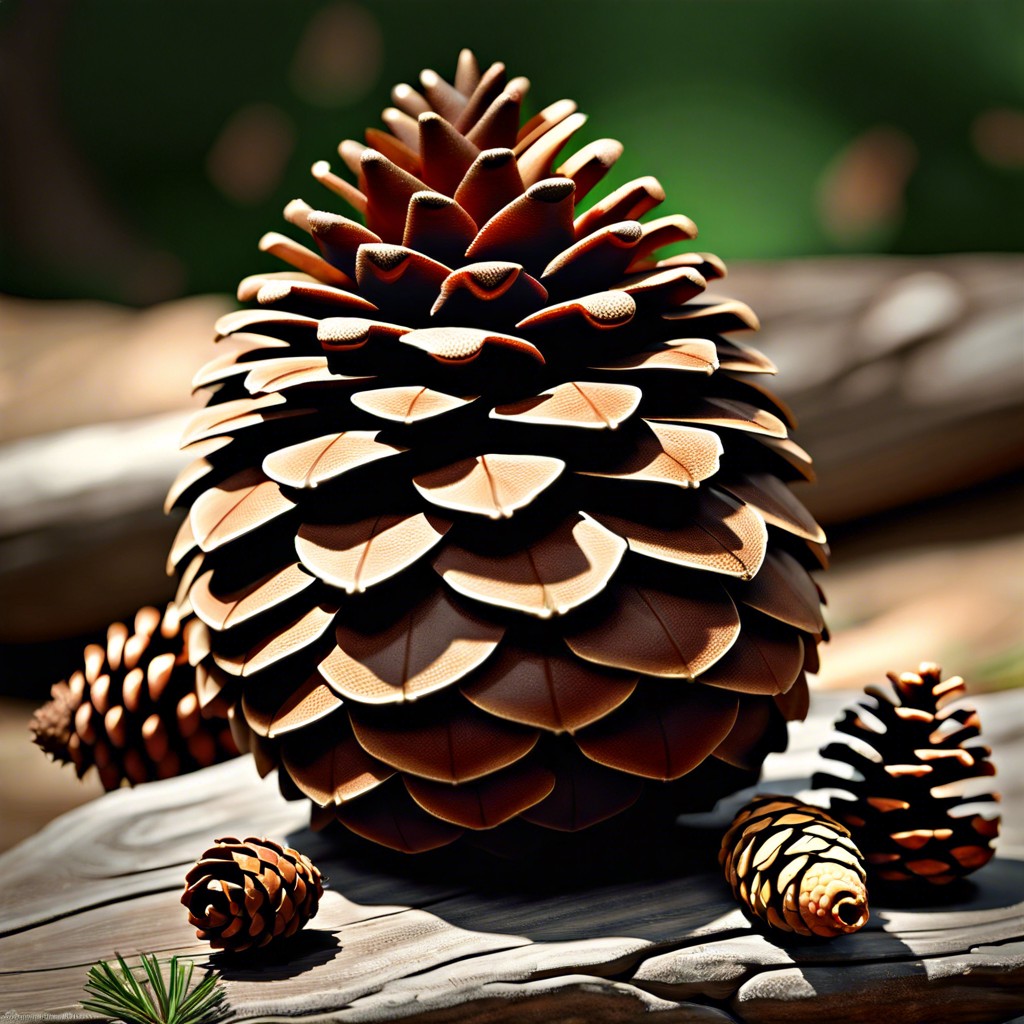Discover the rich spiritual symbolism of the pinecone and its connection to enlightenment and spiritual awakening.
The pinecone stands as a universal symbol rich with historical, spiritual, and artistic significance. From ancient cultures to modern interpretations, its imagery weaves through personal growth and enlightenment. Dive into the diverse meanings behind this intricate natural form and uncover its powerful connections across time and tradition.
Key takeaways:
- Pinecones symbolize renewal, enlightenment, and eternal life.
- Various cultures and religions embrace pinecones for spiritual connections.
- Modern interpretations link pinecones to nature, intuition, and transformation.
- Pinecones feature heavily in art, literature, and symbolize wisdom.
- Pinecones represent personal growth, enlightenment, and new beginnings.
Historical Significance in Ancient Cultures

Pinecones have held significant roles in various ancient cultures. The ancient Egyptians saw the pinecone as a symbol of fertility and regeneration, often linking it with Osiris, the god of death and rebirth. In Greek mythology, Dionysus, the god of wine and ecstasy, was frequently depicted with a thyrsus staff topped with a pinecone, symbolizing eternal life.
Similarly, Roman culture embraced the pinecone as an emblem of Venus, goddess of love and fertility. Moving to the East, in Hindu tradition, the pinecone symbolizes the pineal gland or third eye, crucial for spiritual enlightenment. Aztec and Mayan civilizations also incorporated pinecone imagery in their religious artifacts, symbolizing spiritual ascension and immortality. These ancient representations highlight the pinecone’s longstanding association with themes of renewal, enlightenment, and eternal life.
Symbolic Meanings in Spiritual Traditions
Pinecones often symbolize the third eye and enlightenment in many spiritual traditions. They are regarded as a bridge between the human mind and higher realms of consciousness.
In Hinduism, pinecones can represent the pineal gland, which is tied to intuition and spiritual insight. This resonates with the concept of the third eye chakra, or Ajna.
Ancient Egyptians saw the pinecone shape as a sign of eternal life and regeneration. They often depicted it in their art and architecture, emphasizing its spiritual importance.
In Christianity, pinecones are frequently associated with the idea of resurrection and eternal life, commonly appearing in religious imagery and architecture.
These various interpretations converge on the themes of enlightenment, spiritual awakening, and the continuity of life.
Modern Interpretations and Usage
Today, pinecones are seen as symbols of fertility, regeneration, and creativity. This ancient symbol has found new life in various aspects of modern culture. In home décor, pinecones often represent a connection to nature, bringing an element of the outdoors inside.
In personal development circles, pinecones are sometimes used to symbolize the awakening of the third eye, a concept borrowed from spiritual traditions. This suggests heightened intuition and deeper insight.
Many artists employ pinecone imagery to evoke themes of growth and transformation. It’s fascinating how this simple natural object can carry such a profound and multifaceted symbolic weight in today’s world.
In fashion, pinecone motifs are featured in jewelry and clothing, symbolizing not only natural beauty but also resilience and endurance. You’ll find pinecones making appearances in seasonal crafts and decorations, often used to symbolize the enduring spirit of life even in the cold of winter.
Altogether, the pinecone continues to be a versatile and powerful symbol in contemporary times, bridging ancient wisdom with modern life.
Pinecone Imagery in Art and Literature
Renaissance artists frequently used pinecones as symbols of enlightenment and spiritual awakening. They often appeared in religious paintings, subtly conveying deeper meanings.
In literature, pinecones have been depicted as metaphors for growth and expansion. The Fibonacci sequence found in pinecone patterns mirrors themes of natural progression and harmony in nature.
Contemporary works also embrace pinecone imagery, often representing longevity or the eternal cycle of life. Authors and poets capture its essence to evoke a sense of timeless wisdom and enduring life force.
These artistic and literary uses showcase the pinecone’s rich symbolic heritage, connecting humanity with nature and the divine.
Connection to Personal Growth and Enlightenment
A pinecone is a powerful symbol of personal growth and spiritual enlightenment. It’s often linked to the pineal gland in the brain, which many spiritual traditions consider the seat of the soul or the third eye.
The spiral pattern of the pinecone mirrors natural cycles and universal growth patterns, encouraging us to evolve and expand our consciousness. Just as a pinecone opens to release seeds, it reminds us to be open to new experiences and wisdom.
In meditation, envisioning a pinecone can help focus your intentions on personal development, unlocking inner potential. The imagery of its layers peeling back can symbolize delving deeper into the self.
Many people use pinecones in rituals to signify new beginnings or spiritual awakening, finding this natural element to be a grounding and inspiring tool. This small, unassuming object holds within it a profound reminder of our capacity for growth and transformation.





